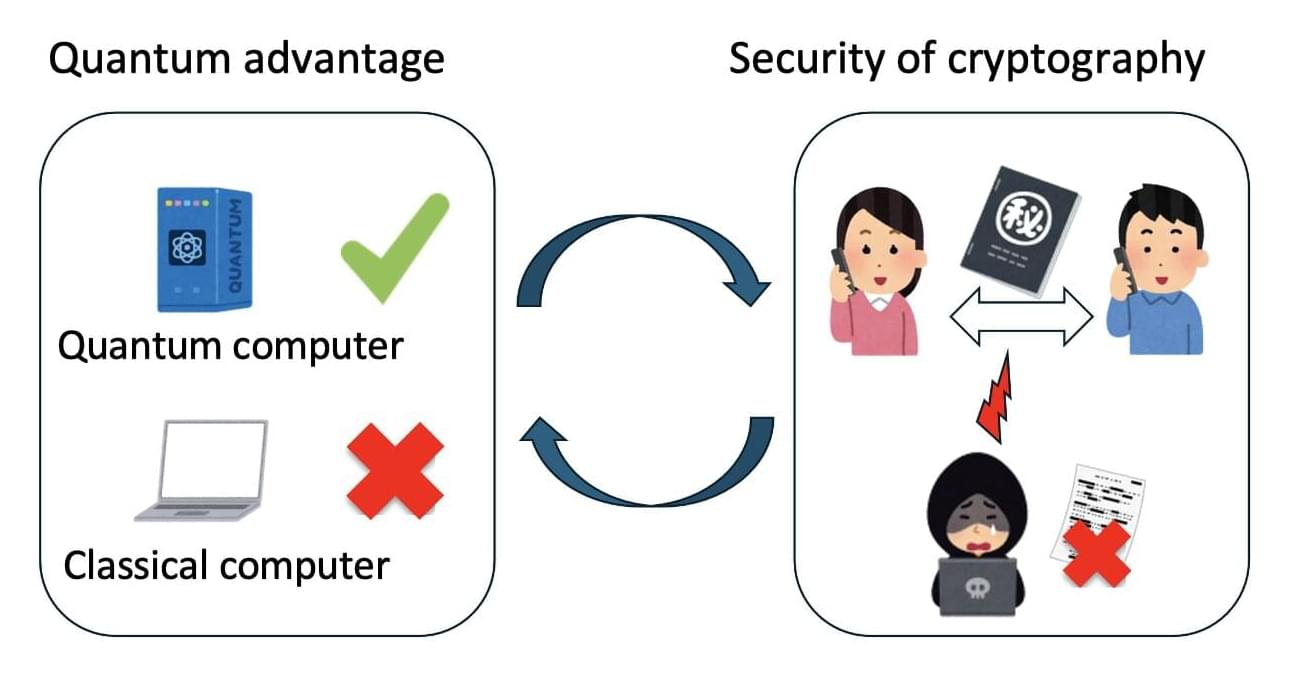In theory, quantum physics can bypass the hard mathematical problems at the root of modern encryption. A new proof shows how.





In 2024, a quantum state of light was successfully teleported through more than 30 kilometers (around 18 miles) of fiber optic cable amid a torrent of internet traffic – a feat of engineering once considered impossible.
The impressive demonstration by researchers in the US may not help you beam to work to beat the morning traffic, or download your favourite cat videos faster.
However, the ability to teleport quantum states through existing infrastructure represents a monumental step towards achieving a quantum-connected computing network, enhanced encryption, or powerful new methods of sensing.


Experts say quantum computing is the future of computers. Unlike conventional computers, quantum computers leverage the properties of quantum physics such as superposition and interference, theoretically outperforming current equipment to an exponential degree.
When a quantum computer is able to solve a problem unfeasible for current technologies, this is called the “quantum advantage.” However, this edge is not guaranteed for all calculations, raising fundamental questions regarding the conditions under which such an advantage exists. While previous studies have proposed various sufficient conditions for quantum advantage, the necessity of these conditions has remained unclear.
Motivated by this uncertainty, a team of researchers at Kyoto University has endeavored to understand the necessary and sufficient conditions for quantum advantage, using an approach combining techniques from quantum computing and cryptography, the science of coding information securely.

An international law enforcement action dismantled a Romanian ransomware gang known as ‘Diskstation,’ which encrypted the systems of several companies in the Lombardy region, paralyzing their businesses.
The law enforcement operation codenamed ‘Operation Elicius’ was coordinated by Europol and also involved police forces in France and Romania.
Diskstation is a ransomware operation that targets Synology Network-Attached Storage (NAS) devices, which are commonly used by companies for centralized file storage and sharing, data backup and recovery, and general content hosting.

Quantum computers have the potential to revolutionize computing by solving complex problems that stump even today’s fastest machines. Scientists are exploring whether quantum computers could one day help streamline global supply chains, create ultra-secure encryption to protect sensitive data against even the most powerful cyberattacks, or even develop more effective drugs by simulating their behavior at the atomic level.
But building efficient quantum computers isn’t just about developing faster chips or better hardware. It also requires a deep understanding of quantum mechanics—the strange rules that govern the tiniest building blocks of our universe, such as atoms and electrons—and how to effectively move information through quantum systems.
In a paper published in Physics Review X, a team of physicists—including graduate student Elizabeth Champion and assistant professor Machiel Blok from the University of Rochester’s Department of Physics and Astronomy—outlined a method to address a tricky problem in quantum computing: how to efficiently move information within a multi-level system using quantum units called qudits.

Understanding randomness is crucial in many fields. From computer science and engineering to cryptography and weather forecasting, studying and interpreting randomness helps us simulate real-world phenomena, design algorithms and predict outcomes in uncertain situations.
Randomness is also important in quantum computing, but generating it typically involves a large number of operations. However, Thomas Schuster and colleagues at the California Institute of Technology have demonstrated that quantum computers can produce randomness much more easily than previously thought.
And that’s good news because the research could pave the way for faster and more efficient quantum computers.

Quantum computers still face a major hurdle on their pathway to practical use cases: their limited ability to correct the arising computational errors. To develop truly reliable quantum computers, researchers must be able to simulate quantum computations using conventional computers to verify their correctness—a vital yet extraordinarily difficult task.
Now, in a world-first, researchers from Chalmers University of Technology in Sweden, the University of Milan, the University of Granada, and the University of Tokyo have unveiled a method for simulating specific types of error-corrected quantum computations—a significant leap forward in the quest for robust quantum technologies.
Quantum computers have the potential to solve complex problems that no supercomputer today can handle. In the foreseeable future, quantum technology’s computing power is expected to revolutionize fundamental ways of solving problems in medicine, energy, encryption, AI, and logistics.